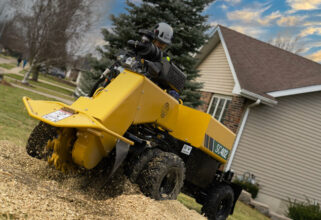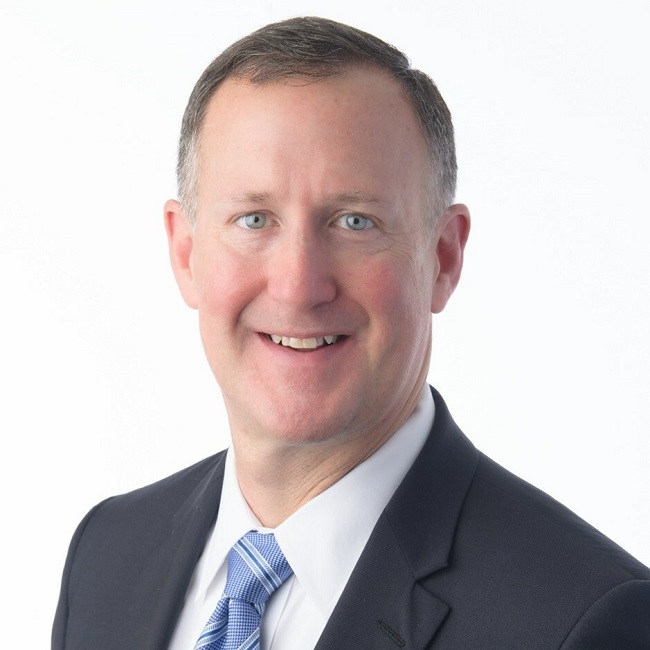OPEI chairman shares views on state of OPE industry
Fred J. WhyteIn an Outdoor Power Equipment exclusive on Dec. 21, Fred J. Whyte, president of Stihl Inc. and chairman of the board of directors for the Outdoor Power Equipment Institute (OPEI), shared his views on the state of the OPE industry.
OPE: What is new and exciting about your company?
Fred J. Whyte (FJW): I’m pleased to say that in the face of one of the most challenging economic environments in recent history, STIHL Inc. enjoyed record sales [in 2010] in no small part due to the efforts or our network of servicing dealers. The year also ushered in two first-time achievements for STIHL and STIHL dealers. More specifically, STIHL Inc. achieved recognition as the number one selling brand of handheld outdoor power equipment in America* and produced its 40-millionth unit here in Virginia Beach. Each of these milestones required 36 years of dedication, discipline and the combined efforts of STIHL, our branches, distributors and independent STIHL dealers.
On the product front, the new HSA 65 STIHL Lithium-Ion battery-powered hedge trimmer was well received in the market, even winning a prestigious Popular Mechanics Breakthrough Award. This market reception bodes well for the four additional STIHL Lithium-Ion products that will be launched in 2011.
Finally, we also announced our support of the “Independent We Stand” movement, encouraging consumers to make a conscientious decision to direct a certain portion of their spending in support of locally owned, independent businesses. We encourage all independent, locally owned dealers to register their businesses at IndependentWeStand.org.
* “Number one selling brand” is based on syndicated Irwin Broh Research (commercial landscapers), as well as independent consumer research of 2009 U.S. sales and market share data for the gasoline-powered handheld outdoor power equipment category combined sales to consumers and commercial landscapers.
OPE: How will the recent midterm elections and Republican takeover of control in the House of Representatives impact the OPE industry?
FJW: We’ve already seen some recent positive movement, and it is my sincere hope that both the House and Senate will take seriously the needs of small businesses that make up the Green Industry, including OPE dealers. It is difficult to say how quickly additional positive changes will be realized in the form of revised lending practices, reducing wasteful earmarks, etc.; however, the revitalization of America’s small business and job creation are essential to any sort of sustainable economic recovery.
The extension of the Bush Era Tax Cuts should help successful business owners reinvest in their businesses and make them stronger. But of course, that’s only one piece of the puzzle, and we will need to monitor all actions of the newly formed Congress to see what they can and cannot agree on relative to our industry in 2011.
OPE: How will the Environmental Protection Agency’s (EPA) recent ruling to permit use of E15 (15-percent ethanol) in model 2007-or-newer cars and light trucks impact the OPE industry?
FJW: First, it’s important to understand that the EPA waiver does not approve E15 fuel use in non-road product, including all outdoor power equipment. The EPA’s recent fuel waiver allows E15 for use in 2007 and newer-duty motor vehicles, which includes passenger cars, light-duty trucks and sport utility vehicles (SUV) only. While the EPA is currently evaluating expanding the on-road vehicle allowance to include 2001 through 2006 vehicles, it is not expected to make a decision until early 2011. The Outdoor Power Equipment Institute (OPEI) estimates that with the 2001-and-newer models included, the waiver will encompass approximately 50 percent of the automobile fleet and will therefore present significant challenges to OPE manufacturers, dealers and users.
Due to the limited scope of the intended use for E15, the EPA will require a warning label on all E15-dispensing fuel pumps to alert consumers not to use this fuel in vehicles or engines not specified. Engine manufacturers’ concerns about the adverse effects of E15 when used in current production and older engines are well documented. Fuels exceeding 10-percent ethanol, such as E15, are likely to cause unstable engine operation, power loss and increased heat and exhaust temperatures — and some engines may simply quit running altogether. It is critical to educate equipment users about the fuel and its potential adverse effects on products as customers may not understand that costly repairs are the direct result of using an unapproved fuel. For this reason, questions of liability, warranty and manufacturer/dealer responsibility to the end user are areas the industry must address.
For STIHL, our approach will be to educate our channel and end-users to complement OPEI educational efforts, as well as modify our warranty provisions to reflect the detrimental effects of E15 on small engines.
OPE: What will be the biggest challenges that dealers face in 2011, and how should they handle those challenges?
FJW: The economy will continue to be the biggest challenge for dealers in 2011. The job market remains tepid and, despite some recent encouraging indicators, building sustainable consumer confidence will take time. The industry will also have to keep an eye on the availability of credit both for dealers and their customers. Exercising a conservative approach to credit and avoiding digging a deeper hole are success strategies for bouncing back from the credit crunch. And if dealers have not already developed a relationship with their local banker, I encourage them to do so now to prepare for long term. Other challenges will include a housing and construction industry that will most likely continue to be sluggish.
Overall, I would say that while pent-up demand and rebuilding inventories helped our industry in 2010, dealers can’t rely on that for 2011. Offering a dependable, quality product; delivering superior customer service that mass merchants can’t duplicate; and ultimately providing the best value for the customers’ dollar remains paramount. Dealers will also have to evaluate their relationships with their business partners. Manufacturer- and distributor-subsidized marketing programs that offer a turn-key approach (and a successful track record) for increasing share of voice remain vital to sustained dealer visibility in a crowded marketplace.
The industry as a whole learned some valuable lessons in 2010. What we do with that information in 2011 will be a key driver to our success in 2011.
OPE: What is your overall outlook for the OPE industry in 2011?
FJW: Last year, the OPE industry as a whole experienced its first boost in several years with most categories increasing shipments. And in keeping with current economic forecasts for 2011, I would expect to see continued growth, albeit at a relatively slow pace. As mentioned previously, consumer confidence will be an important factor in 2011. Growing sales without “motivated” consumers will be extremely difficult as the industry faces continued high unemployment and a slow housing market. Realistically, 2012 and beyond will hold greater promise for more significant growth.
EDITOR’S NOTE: To read what other leaders had to say about the state of the OPE industry heading into 2011, be sure to check out Outdoor Power Equipment‘s two-part “Industry Forecasts” series in the January and February 2011 issues!




